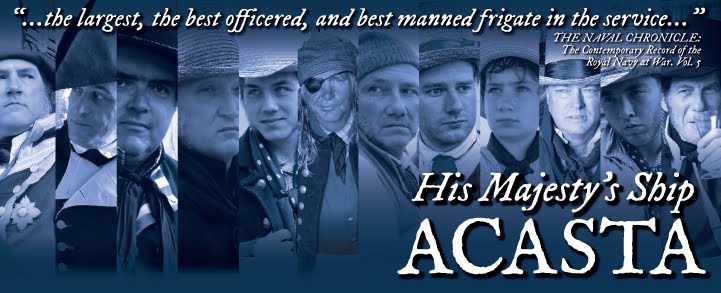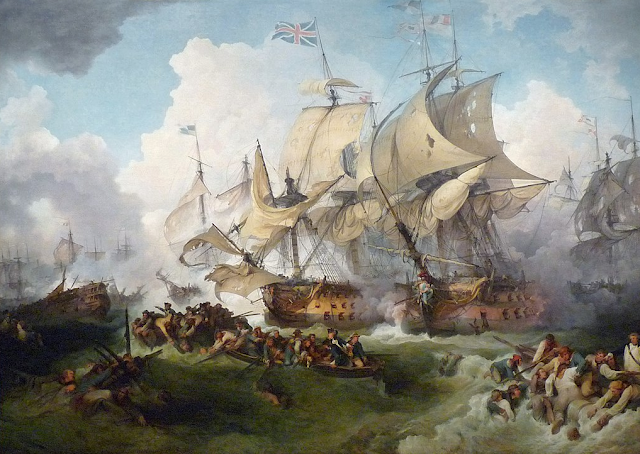Gamecocks were not uncommon aboard ships of the Napoleonic war period. An interesting event occurred on board the Marlborough during the battle of The Glorious First of June (1794). The Marlborough (Captain George Berkeley) was part of Lord Howe’s victorious fleet, and the incident is related in “The Life of Richard Earl Howe, K.G”. by Sir John Barrow (London, 1838).
“A curious incident is said to have occurred aboard this ship. When she was entirely dismasted, and otherwise disabled, by the extreme severity of the conflict,- the captain (the Hon. G. Berkley), and the second-lieutenant (Sir Michael Seymour), severely wounded, the latter having his arm shot off, and the ship so roughly treated, that a whisper of surrender was said to have been uttered, which Lieutenant Monckton overhearing, resolutely exclaimed, “he would be d---d if she should ever surrender, and that he would nail her colours to the stump of the mast”.
At that moment a cock, having by the wreck been liberated from the broken coop, suddenly perched himself on the stump of the mainmast, clapped his wings, and crowed aloud; in an instant three hearty cheers rang throughout the ship’s company, and no more talk of surrender. At the same time the Aquilon frigate, commanded by the Hon. Sir Robert Stopford, seeing the helpless state the Marlborough was in, came to her assistance and towed her out of the line. The gallant admiral, in reply to a question about the cock says, “it partakes of a cock-and-bull story, but there is no mistake in the cheers of the crew on my taking her in tow.”
It is nevertheless a true story: through the kindness of Sir Thomas Hardy, an inquiry was made among the old pensioners of the Marlborough in Greenwich hospital, and two of the most intelligent, Alexander Boswell and William Brett, fully corroborate the circumstance; and the later states that, on arrival of the ship at Plymouth the cock was given to Lord George Lennox, the governor, by the desire of Captain Berkley. Lady Hardy has been good enough to ascertain from her aunt, Lady Mary Lennox, that the story is perfectly true, and that the cock lived to a good old age, and while the Marlborough remained at Plymouth it was daily visited by parties of her crew.”
We are grateful to Roy and Lesley Adkins (authors of “Jack Tar”) for providing us with this reference.

























































